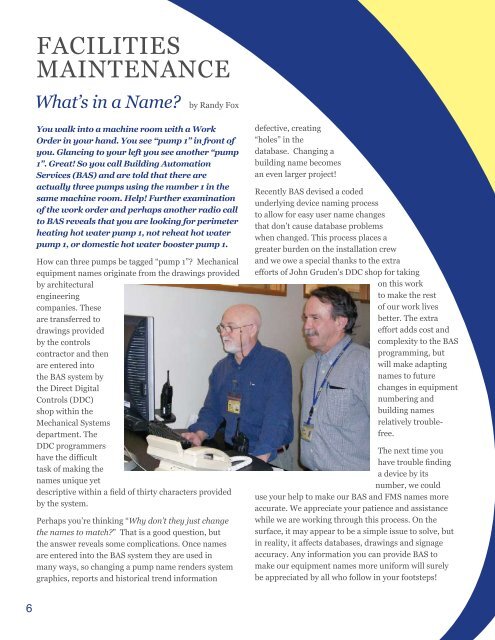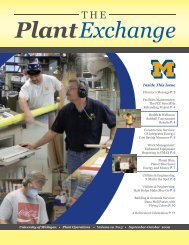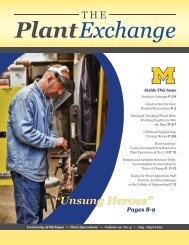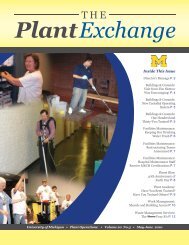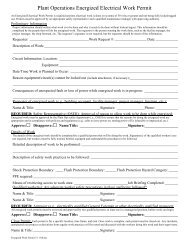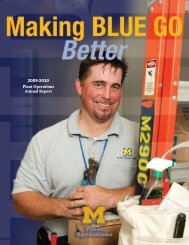Volume 20 / No. 1 / January-February 2010 - Plant Operations ...
Volume 20 / No. 1 / January-February 2010 - Plant Operations ...
Volume 20 / No. 1 / January-February 2010 - Plant Operations ...
You also want an ePaper? Increase the reach of your titles
YUMPU automatically turns print PDFs into web optimized ePapers that Google loves.
FACILITIES<br />
MAINTENANCE<br />
What’s in a Name? by Randy Fox<br />
You walk into a machine room with a Work<br />
Order in your hand. You see “pump 1” in front of<br />
you. Glancing to your left you see another “pump<br />
1”. Great! So you call Building Automation<br />
Services (BAS) and are told that there are<br />
actually three pumps using the number 1 in the<br />
same machine room. Help! Further examination<br />
of the work order and perhaps another radio call<br />
to BAS reveals that you are looking for perimeter<br />
heating hot water pump 1, not reheat hot water<br />
pump 1, or domestic hot water booster pump 1.<br />
How can three pumps be tagged “pump 1”? Mechanical<br />
equipment names originate from the drawings provided<br />
by architectural<br />
engineering<br />
companies. These<br />
are transferred to<br />
drawings provided<br />
by the controls<br />
contractor and then<br />
are entered into<br />
the BAS system by<br />
the Direct Digital<br />
Controls (DDC)<br />
shop within the<br />
Mechanical Systems<br />
department. The<br />
DDC programmers<br />
have the difficult<br />
task of making the<br />
names unique yet<br />
descriptive within a field of thirty characters provided<br />
by the system.<br />
Perhaps you’re thinking “Why don’t they just change<br />
the names to match?” That is a good question, but<br />
the answer reveals some complications. Once names<br />
are entered into the BAS system they are used in<br />
many ways, so changing a pump name renders system<br />
graphics, reports and historical trend information<br />
defective, creating<br />
“holes” in the<br />
database. Changing a<br />
building name becomes<br />
an even larger project!<br />
Recently BAS devised a coded<br />
underlying device naming process<br />
to allow for easy user name changes<br />
that don’t cause database problems<br />
when changed. This process places a<br />
greater burden on the installation crew<br />
and we owe a special thanks to the extra<br />
efforts of John Gruden’s DDC shop for taking<br />
on this work<br />
to make the rest<br />
of our work lives<br />
better. The extra<br />
effort adds cost and<br />
complexity to the BAS<br />
programming, but<br />
will make adapting<br />
names to future<br />
changes in equipment<br />
numbering and<br />
building names<br />
relatively troublefree.<br />
The next time you<br />
have trouble finding<br />
a device by its<br />
number, we could<br />
use your help to make our BAS and FMS names more<br />
accurate. We appreciate your patience and assistance<br />
while we are working through this process. On the<br />
surface, it may appear to be a simple issue to solve, but<br />
in reality, it affects databases, drawings and signage<br />
accuracy. Any information you can provide BAS to<br />
make our equipment names more uniform will surely<br />
be appreciated by all who follow in your footsteps!<br />
6


